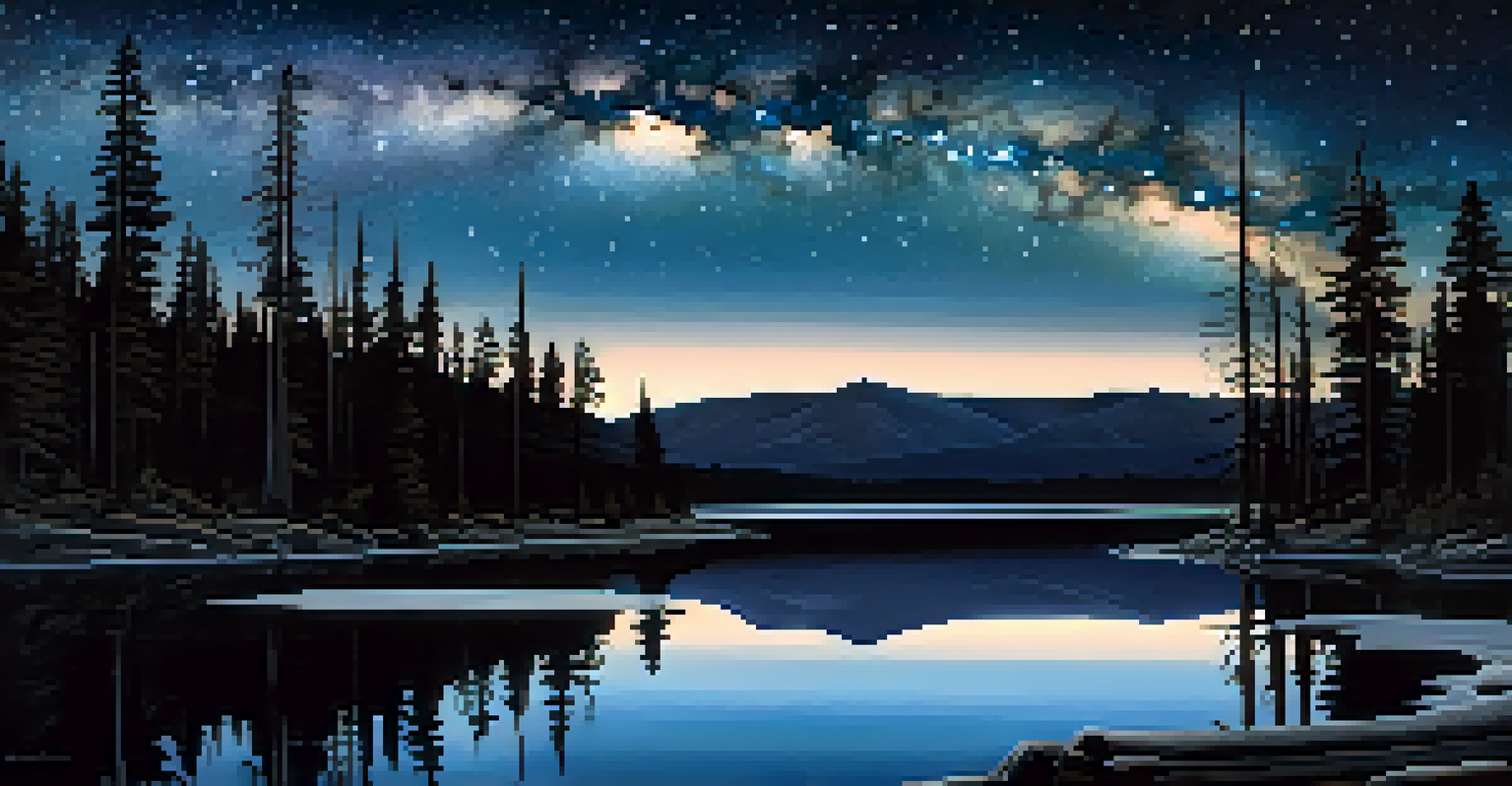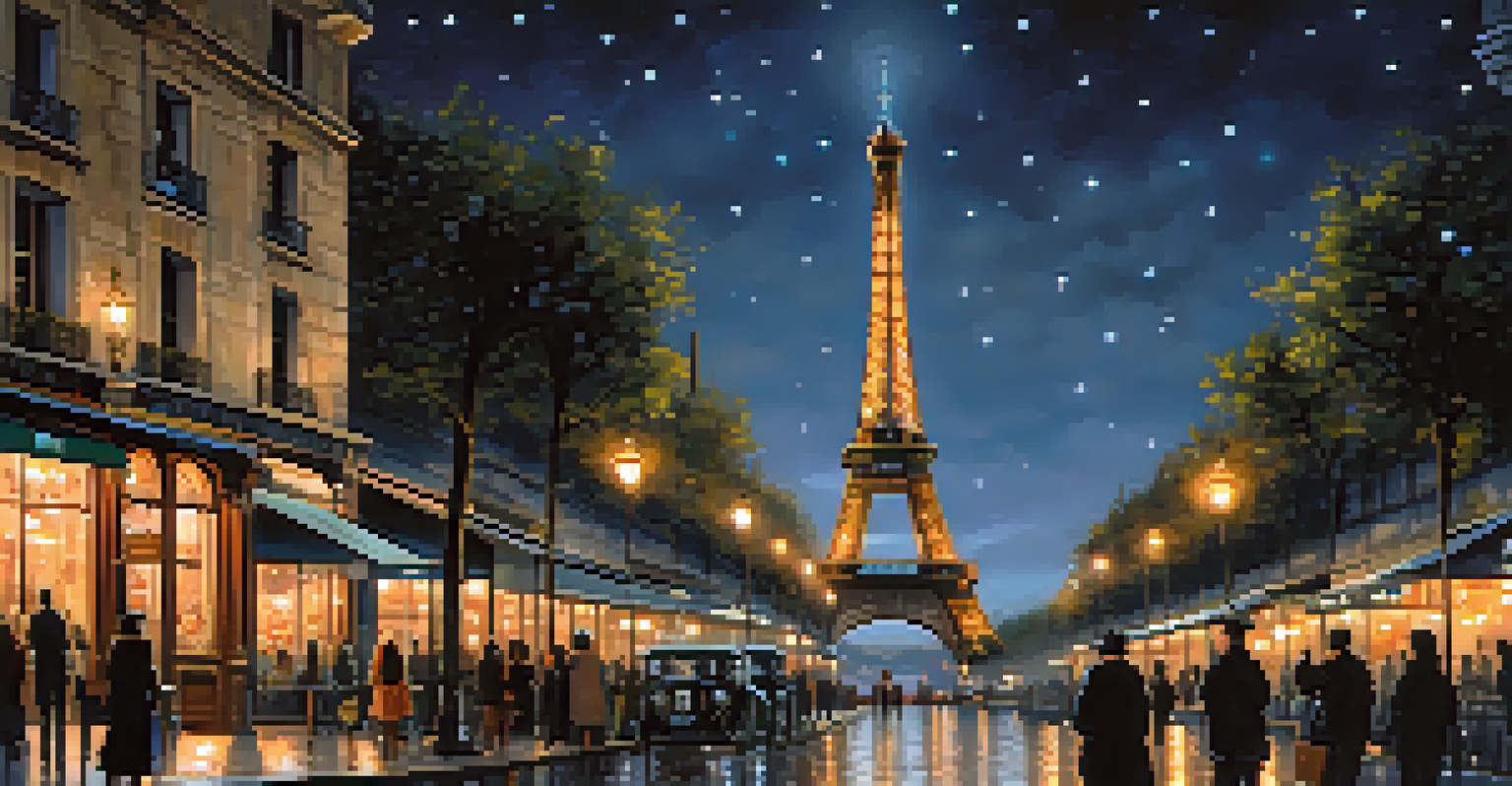The Beauty of UNESCO World Heritage Sites at Night

The Unique Charm of UNESCO Sites After Sunset
UNESCO World Heritage Sites hold a beauty that transforms dramatically once the sun sets. As daylight fades, these remarkable locations often take on an entirely new personality. Shadows play across ancient stones, and the quiet of the night invites a deeper appreciation of their history.
The night is more alive and more richly colored than the day.
Imagine standing before the majestic Colosseum in Rome, its arches illuminated against the dark sky. The soft glow highlights the intricate details of this iconic structure, making it feel almost otherworldly. Each site tells a story that resonates more profoundly under the stars.
Visiting these sites at night can create a sense of intimacy and connection that daytime crowds often diminish. The peaceful atmosphere allows for reflection on the cultural significance and natural beauty of these treasures, making it a truly unique experience.
The Impact of Lighting on Heritage Sites
Lighting plays a crucial role in how we perceive UNESCO sites at night. Thoughtfully designed illumination showcases architectural details that might go unnoticed during the day. This artful lighting not only enhances the site’s beauty but also highlights its historical context.

For instance, the way the Eiffel Tower sparkles at night captivates visitors, creating a magical ambiance. This transformation not only attracts tourists but also encourages locals to rediscover their heritage. The interplay of light and shadow can evoke emotions and tell stories that are often overlooked.
UNESCO Sites Shine at Night
After sunset, UNESCO World Heritage Sites transform, offering a unique and intimate experience that highlights their beauty and history.
Moreover, responsible lighting can also aid in the preservation of these sites. By using energy-efficient methods and minimizing light pollution, we can protect the integrity of these locations while still enjoying their nighttime allure.
Safety and Accessibility at Night
Visiting UNESCO sites at night can raise concerns about safety and accessibility. Many popular locations have recognized this and have implemented measures to ensure a secure environment for nighttime visitors. Well-lit paths and guided tours are often available, allowing people to explore without worry.
There is something so special about the night. It’s a time when everything slows down and we can find peace in the beauty around us.
For example, the historic city of Jerusalem offers evening tours that ensure safety while providing an immersive experience. Walking through the ancient streets at night can feel like stepping back in time, with knowledgeable guides sharing stories and insights.
It's important to check local guidelines and tour options when planning a nighttime visit. Understanding safety measures in place will help you fully enjoy the beauty of these sites after dark.
Cultural Events and Festivals Under the Stars
Many UNESCO World Heritage Sites host cultural events or festivals that take place at night, adding another layer of excitement to your visit. These events often include music, dance, and art that celebrate the local culture and heritage. Experiencing these festivities can provide insights into the community's values and traditions.
For instance, the annual Festival of Lights in Lyon transforms the city into a dazzling display of light and creativity, with many historic sites serving as backdrops. Visitors can walk through illuminated streets, enjoying performances that fill the air with vibrancy.
Lighting Enhances Historical Sites
Thoughtful lighting not only showcases architectural details but also helps preserve the integrity of these remarkable locations.
Participating in these events not only enhances your experience but also supports local artists and the preservation of cultural heritage. It's a wonderful way to engage with the site and make lasting memories.
The Serene Beauty of Natural Heritage Sites at Night
Natural UNESCO World Heritage Sites offer a serene experience after dark, often characterized by stunning landscapes and the sounds of nature. Under the night sky, these locations become tranquil sanctuaries, inviting visitors to reconnect with the environment. The absence of artificial light enhances the visibility of stars, creating a breathtaking celestial view.
For example, Yellowstone National Park provides opportunities for stargazing, where the Milky Way stretches across the sky in all its glory. Such experiences remind us of the beauty and vastness of the natural world, fostering a sense of peace and reflection.
Exploring these sites at night can also offer a different perspective on wildlife behavior. Observing nocturnal animals in their natural habitat can be a thrilling and educational experience, highlighting the importance of conservation efforts.
Photography: Capturing the Magic of Nighttime Heritage
Night photography at UNESCO World Heritage Sites can be an exhilarating challenge for enthusiasts and professionals alike. The contrast of illuminated structures against a dark sky allows for striking compositions that tell a unique story. With the right techniques, photographers can capture the essence of these locations in a whole new light.
For instance, capturing the Taj Mahal under a full moon can create breathtaking images that showcase its timeless beauty. The reflection on the water and the soft glow of the monument can evoke emotions that daylight cannot replicate.
Nighttime Events Enrich Visits
Cultural festivals and events under the stars at UNESCO sites provide deeper insights into local traditions while enhancing the visitor experience.
Whether you're a seasoned photographer or an amateur, exploring these sites at night offers an opportunity to enhance your skills while creating stunning visuals that capture the magic of the moment.
Planning Your Nighttime Visit to UNESCO Sites
When planning a nighttime visit to a UNESCO World Heritage Site, it’s essential to do your research. Each site has its own guidelines for nighttime access, and some may require advance reservations for guided tours. Understanding the schedule and availability will ensure you make the most of your visit.
Consider the time of year you plan to visit, as seasonal changes can affect the accessibility and experience. For example, summer nights may offer longer hours for exploration, while winter may present a unique charm with holiday decorations.

Lastly, be sure to bring appropriate gear, such as comfortable shoes and a camera to capture your experience. With a little planning, you can enjoy the enchanting beauty of these historical sites illuminated by moonlight.